Last week, we started talking about genetics and earlobes. This time, we will continue exploring dominant and recessive traits.
IMPORTANT! As I said last week, if your results cause you to think that you are adopted, don't panic. Scientists are learning new things about genetics every day, and the more we learn; the more complex it gets. We THINK that these traits are controlled by a single gene, but future studies may change that.
We looked at inheritance of earlobes, and saw that free earlobes is a dominant trait, and attached earlobes is a recessive trait. Now we will explore and easier way to look at how these traits are inherited, using something called a Punnett square.
To make a Punnett square, start by drawing a Tic-Tac-Toe board.
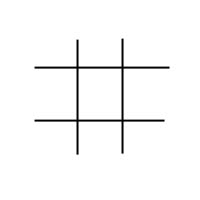
In the left hand column, we will put the possible genes that an offspring could get from its father. We will stick with the same symbols that we used last week, with "E" for free lobes and "e" for attached lobes. If your father has attached earlobes, which is recessive, then he has two recessive genes (ee), so you would put an "e" in both of those boxes. If your father has free earlobes, then it could either he might have two "E"s or he might have one of each, "Ee". To find out which could take some research on his parents, and possibly their parents, etc. For now, lets say that he has one of each, "Ee". We put an "E" in the middle box on the left side, and an "e" in the bottom box on the left side.
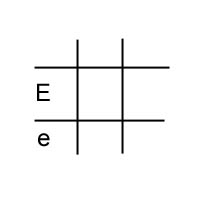
Then, across the top, we will put the possible genes that an offspring could get from its mother. For this example, we will let the mother also have "Ee", which means that while she has free earlobes, she also carries the recessive gene for attached lobes. We put her genes across the top.
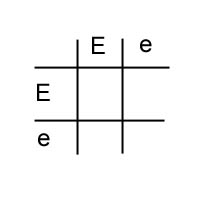
Now comes the important part for the science of genetics. We fill in the other blocks by combining the letter at the top of the column, and the letter at the left of the row. For the center box, the letter at the top is an "E", and the letter at the left is an "E", so in that box, we would write "EE".
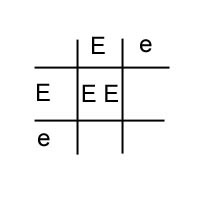
Then we do the same thing for the other boxes.
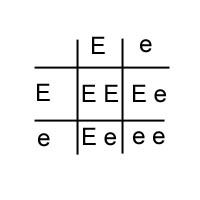
This shows us the four possible combinations that each offspring could have.
There is one box with "EE", so there is a 25% chance (one in four) that each offspring will get "EE", which means two dominant genes. That child will have free earlobes.
There are two boxes with "Ee" which means that there is a 50% chance (two 25%s combined) that the child will get "Ee", one dominant gene and one recessive gene. That child will have free earlobes, but will carry the gene for attached earlobes, just like her parents.
There is also one box with "ee", so there is a 25% chance that the offspring will get "ee". That child will have attached earlobes, even though his parents both have free earlobes.
Once you get a grasp on that idea, try some other combinations. What if the father had "ee" and the mother had "EE"? What if the father had "ee" and the mother had "Ee"?
Now, don't confuse % chance with actual percentages. In the example with the boxes above, there was only a 25% chance of the child having attached earlobes, "ee". If the parents had four children, they might all have attached earlobes, or they might all have free earlobes.
Think of it like flipping a coin. When you flip the coin, there is a 50/50 chance of getting heads or tails. Now, what if you flipped the coin five times and each time it came up heads. What is the chance that your next flip will be heads? 50%. Each flip has a 50% chance of being heads. The same is true of genetics. If there is a 25% chance that offspring will have attached lobes that does not mean that if there are four children, only one can have attached lobes. It means that each has a 25% chance of having them.
There are several other traits that seem to be controlled by a single gene, and you can make Punnett squares for them too. Some that you might try include:
Hairline: Having a "widow's peak" is dominant, and a straight hairline is recessive.
Dimples: Having dimples is dominant.
Hitchhiker's thumb: Open your hand as wide as you can. If your thumb bends backwards that is hitchhiker's thumb, which is recessive. Straight thumbs are dominant.
Cleft chin: Having a cleft chin is dominant.
One last thought on the subject. Remember that we are constantly learning more and more about genetics. Each of these may be found to be controlled by more than one gene, so don't panic if the results don't match reality. As long as you have the "I love ice cream" gene, everything will be OK.
Have a wonder-filled week.
